Peter Paul Rubens in 10 Paintings
A Baroque master and portraitist of the royals, Peter Paul Rubens is probably best known for his often drama-filled religious and mythological...
Anna Ingram 30 May 2024
Apollo and Daphne, one of Gian Lorenzo Bernini’s first major commissions, was completed between 1622 and 1625 for Cardinal Scipione Borghese, a great art patron and nephew of Pope Paul V. Carrying the symbolism of lust versus rejection, the sculpture stands vigorously as one of Bernini’s greatest accomplishments.
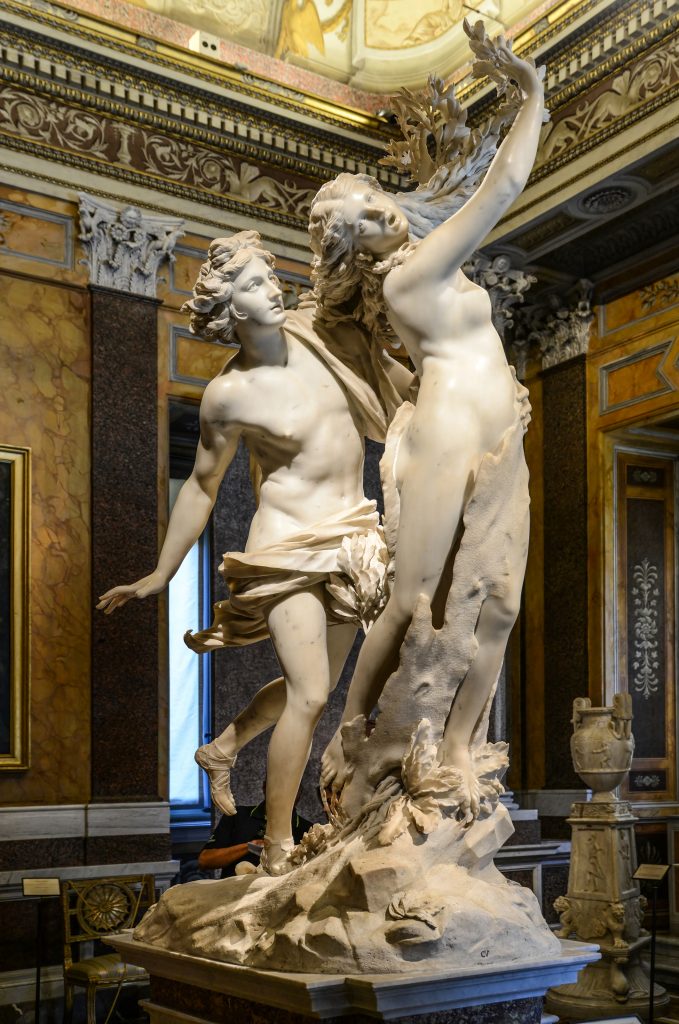
Gian Lorenzo Bernini, Apollo and Daphne, 1622–1625, Galleria Borghese, Rome, Italy.
Gian Lorenzo Bernini, the prolific Italian sculptor and architect of the Baroque era, was born in Naples in 1598. From an early age, he displayed a flair for infusing life into cold marble, which he turned with prowess into sculptures that pulsated with movement and emotion.
Bernini’s groundbreaking techniques made him a true pioneer of his time. Today, his legacy lives on within the idealism of Baroque art.
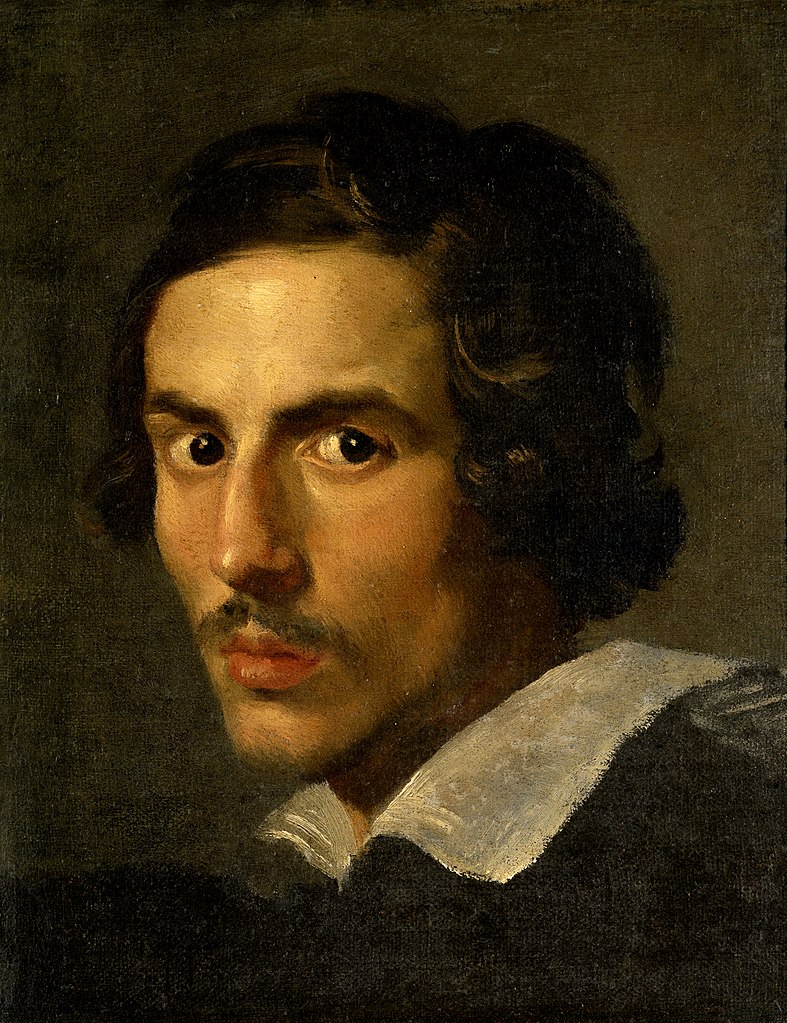
Gian Lorenzo Bernini, Self-portrait, c. 1623, Galleria Borghese, Rome, Italy.
The Metamorphoses is a renowned narrative poem from ancient Rome written around 8 CE by Publius Ovidius Naso, commonly known as Ovid. The work comprises 15 books with over 250 myths from Roman and Greek mythology interconnected through the theme of transformation — physical, emotional, or psychological — that ended up redefining art and literary history.
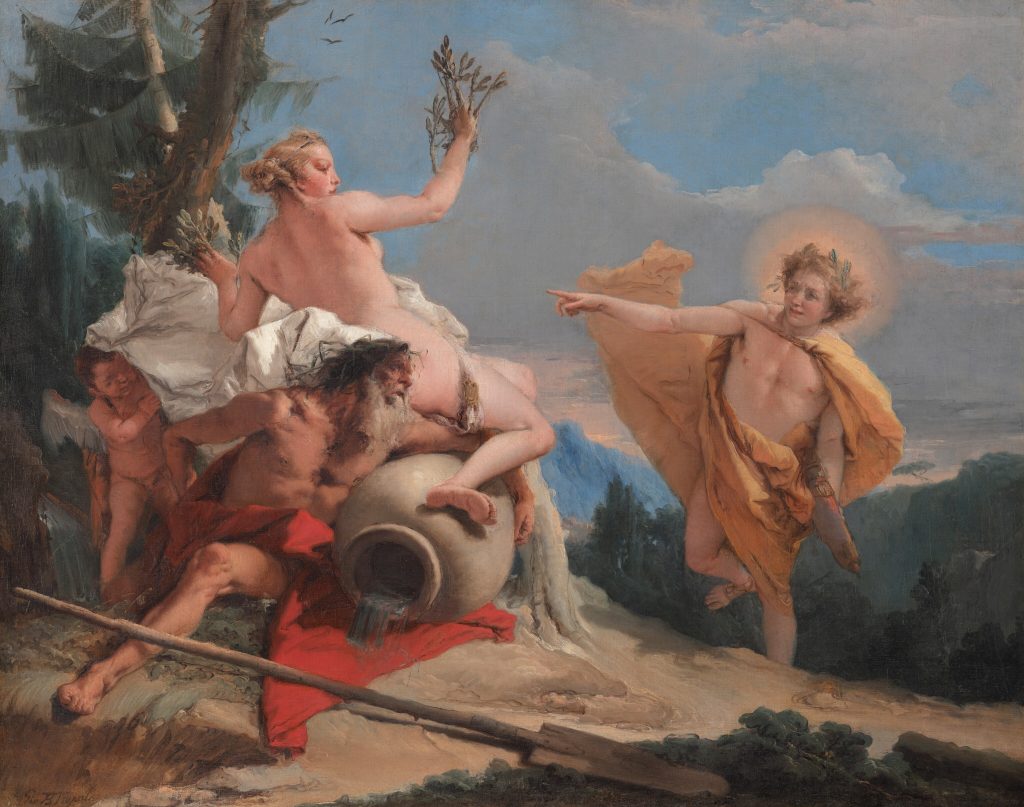
Giovanni Battista Tiepolo, Apollo Pursuing Daphne, c. 1755/1760, National Gallery of Art, Washington, DC, USA.
In Ovid’s narrative, Apollo, the god of archery and music, insulted Eros, the god of love, who took his revenge. Eros fashioned two arrows, one of gold and one of lead. He pierced Apollo with the golden arrow, causing him to be infatuated with Daphne, a nymph sworn to chastity. Cupid then pierced Daphne with the lead arrow, causing her to be forever repulsed by Apollo’s amorous advances.
Daphne fled to guard her chastity while Apollo grew relentless in his pursuit. A fearful Daphne, desperate, turned to her father, the river god Peneus. Peneus stepped in right before Apollo reached Daphne to transform her into a laurel tree, preserving both her chastity and her freedom. This poignant story serves as a reminder of the complexities of love and the inevitability of change. Bernini captures the moment of Daphne’s transformation just as Apollo reaches out to grasp Daphne in this iconic sculpture, an ingenious choice that explores themes of love, desire, and metamorphosis.
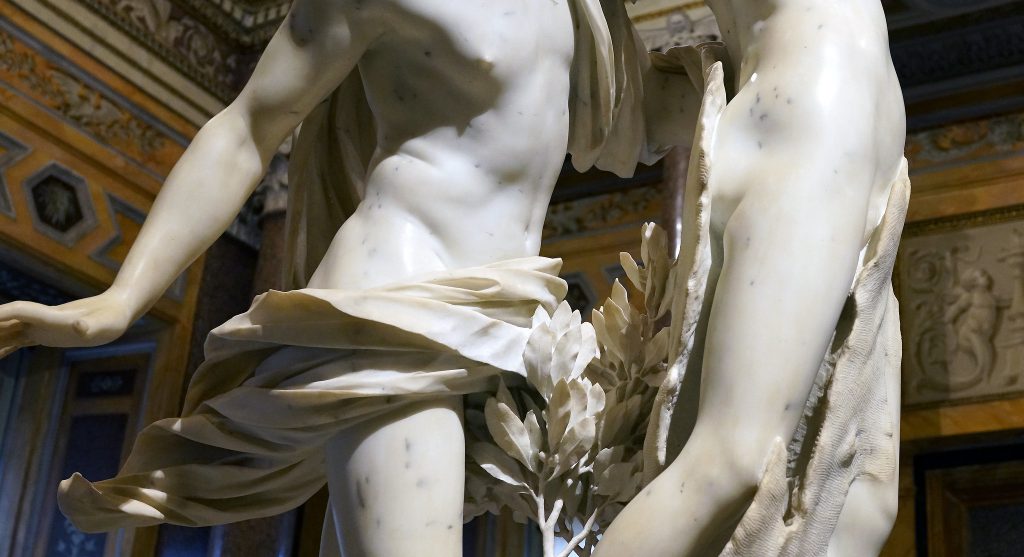
Gian Lorenzo Bernini, Apollo and Daphne, 1622–1625, Galleria Borghese, Rome, Italy. Photograph by Steven Zucker via Flickr. (CC-BY-NC-SA-2.0).
Bernini aptly embodied suppleness and audacity in cold marble, striking a balance between movements and sentiments as he had done in the Rape of Proserpina. The scene, rendered life-size, has Apollo extending his arm to touch Daphne and wrapping his hand around her torso. Apollo’s gesture creates a dynamic tension along with the contorted limbs of Daphne. Meanwhile, a yearning desire and a sense of anguish are respectively conveyed through Apollo’s flowing hair and Daphne’s delicate, contorted features.
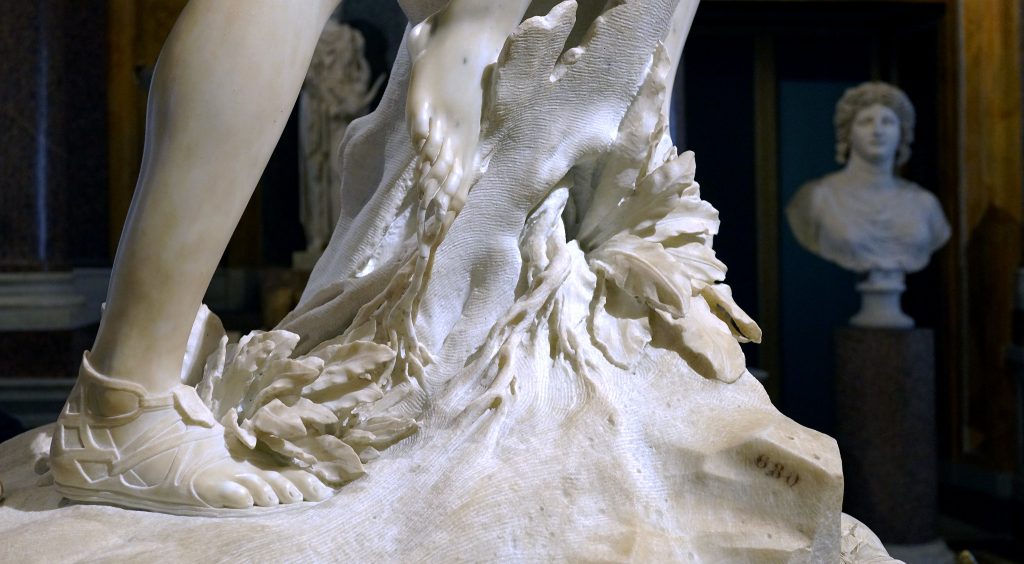
Gian Lorenzo Bernini, Apollo and Daphne, 1622–1625, Galleria Borghese, Rome, Italy. Photograph by Steven Zucker, Smart History in December 2016 via Flickr. (CC-BY-NC-SA-2.0).
Freeze-framed by Bernini is the very moment of Daphne’s transformation. The bark of a tree emerges above ground near the branches and leaves, morphed from Daphne’s body. The latter becomes animated as one moves around, following the details Bernini rendered. His genius deserves to be appreciated from all angles.
Bernini approached the work as if it is “non finito” (unfinished), deliberately leaving some of the marble uneven to foreground Daphne’s transformation. A combination of polished and rough surfaces adds to the sculpture’s depth and complexity.
A close-up view shows Daphne’s gradually diminishing humanity through the elaborate laurel leaves on her fingertips. Then, seen from behind, is her silhouette resembling a laurel tree. In both cases, the laurels symbolize immortality following an ancient Roman metaphor.
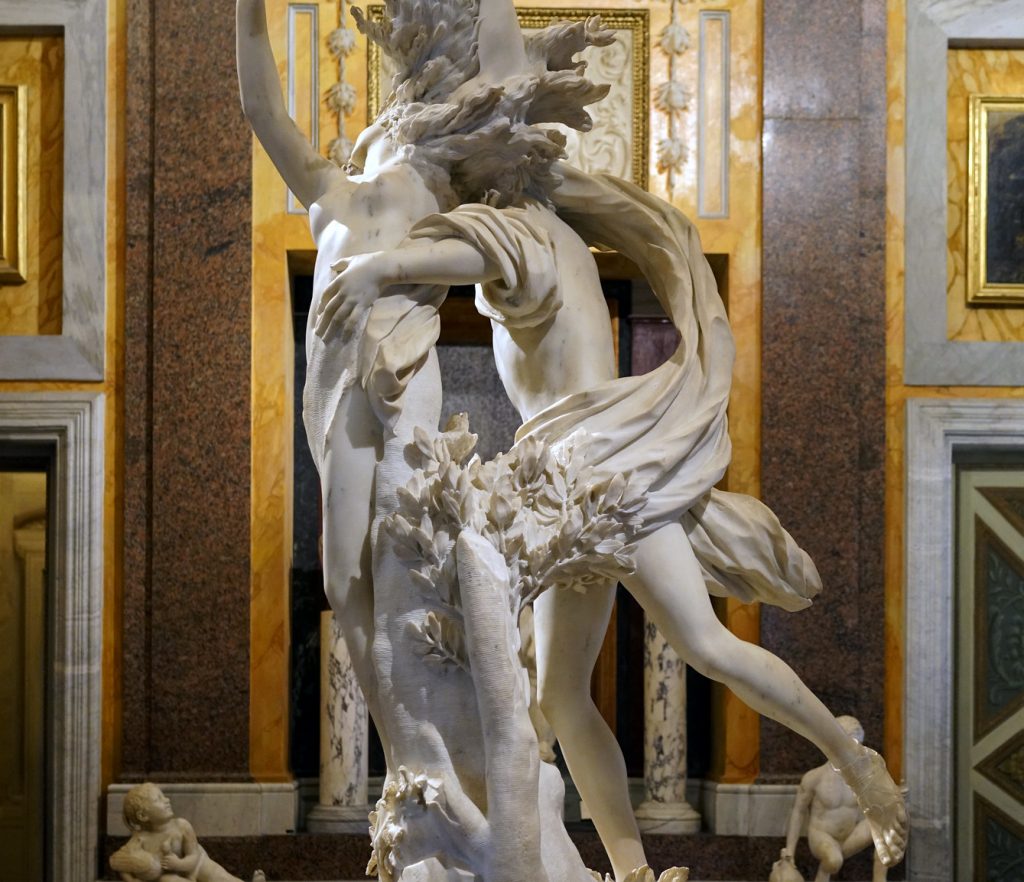
Gian Lorenzo Bernini, Apollo and Daphne, 1622–1625, Galleria Borghese, Rome, Italy. Photograph by Steven Zucker, Smart History in December 2016 via Flickr. (CC-BY-NC-SA-2.0).
Apollo and Daphne alludes to unrequited love and uncertainty. In Bernini’s masterful hands, Apollo’s fierce pursuit embodies a fleeting desire. His predatory stance makes complete a narrative about lust and self-restraint against Daphne’s passivity. On the other hand, the connection between Apollo and Daphne foreshadows a tragedy, as the latter gives up her human form before her admirer to become a tree.
Bernini’s convincing techniques and accurate grasp of emotions brought a timeless myth to life. It empowers the viewer through art that questions the human condition. This remarkable work is now at the Galleria Borghese in Rome, Italy, among many other Baroque masterpieces.
DailyArt Magazine needs your support. Every contribution, however big or small, is very valuable for our future. Thanks to it, we will be able to sustain and grow the Magazine. Thank you for your help!